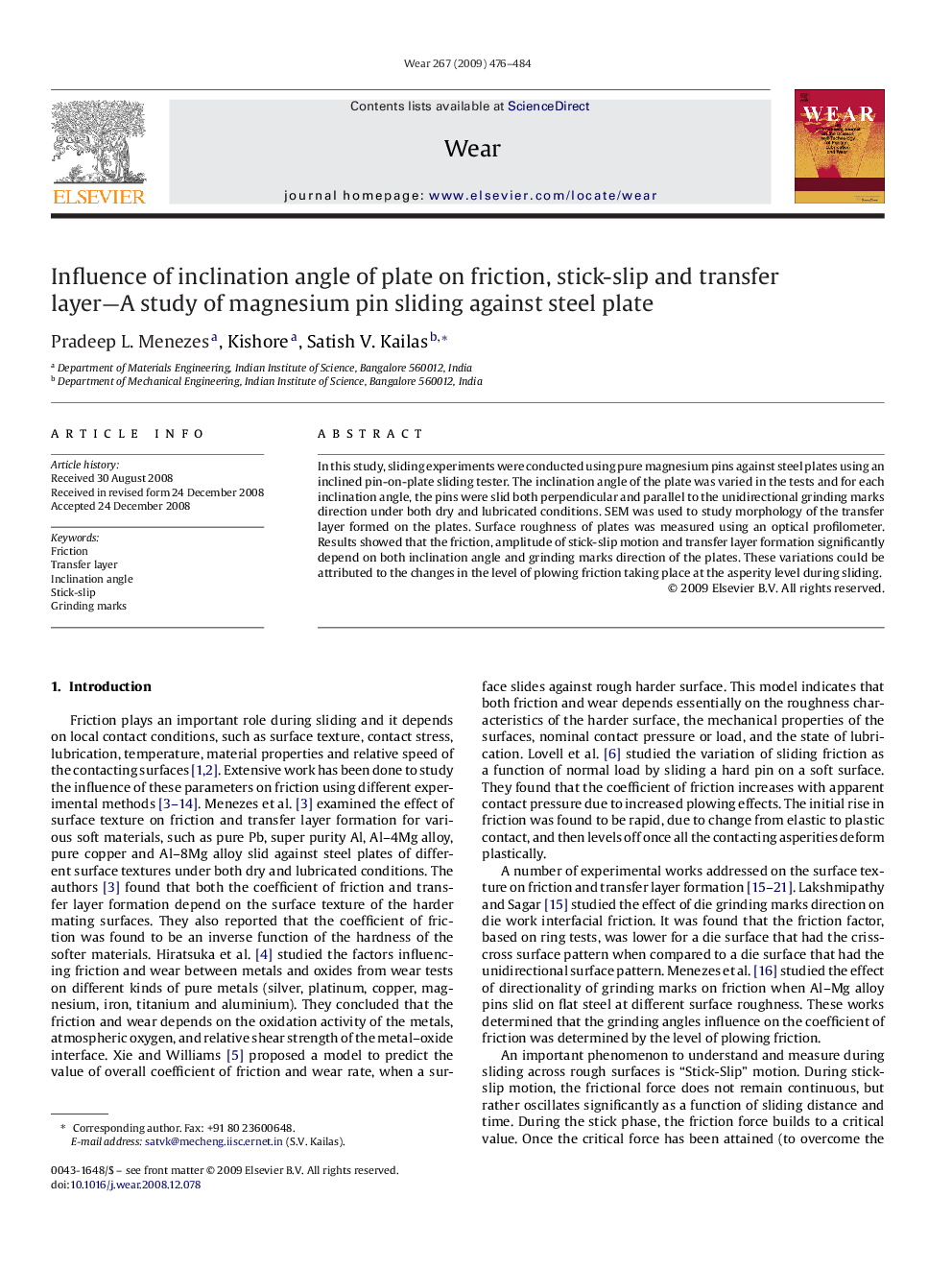| Article ID | Journal | Published Year | Pages | File Type |
|---|---|---|---|---|
| 618757 | Wear | 2009 | 9 Pages |
In this study, sliding experiments were conducted using pure magnesium pins against steel plates using an inclined pin-on-plate sliding tester. The inclination angle of the plate was varied in the tests and for each inclination angle, the pins were slid both perpendicular and parallel to the unidirectional grinding marks direction under both dry and lubricated conditions. SEM was used to study morphology of the transfer layer formed on the plates. Surface roughness of plates was measured using an optical profilometer. Results showed that the friction, amplitude of stick-slip motion and transfer layer formation significantly depend on both inclination angle and grinding marks direction of the plates. These variations could be attributed to the changes in the level of plowing friction taking place at the asperity level during sliding.
